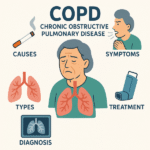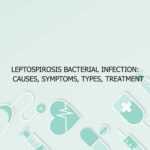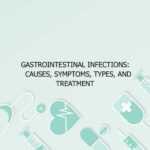Now Reading: How to Get Rid of Varicose Veins Naturally
- 01
How to Get Rid of Varicose Veins Naturally
How to Get Rid of Varicose Veins Naturally
Varicose veins are a common condition affecting millions of people, particularly women. They are enlarged, twisted veins that usually appear on the legs and feet due to increased pressure on the veins. While they are often considered a cosmetic concern, varicose veins can also cause pain, discomfort, and more serious circulatory problems if left untreated. Many people seek natural remedies for varicose veins either to avoid surgical intervention or as complementary therapies. This article explores how to get rid of varicose veins naturally, discussing lifestyle changes, diet, herbal remedies, and preventive strategies.
Varicose veins occur when the valves in the veins that regulate blood flow fail to function properly. This leads to the pooling of blood in the veins, causing them to bulge and become visible. Several factors contribute to this condition, including genetics, obesity, pregnancy, standing or sitting for long periods, and aging. While medical procedures like laser therapy and vein stripping are effective treatments, natural remedies can help reduce symptoms, improve vein health, and even prevent the condition from worsening.
The first line of natural treatment involves lifestyle changes. Regular exercise is crucial as it helps improve blood circulation in the legs. Activities like walking, swimming, cycling, and yoga are particularly beneficial. Exercise strengthens calf muscles, which act as natural pumps to push blood back toward the heart. Even small daily movements, such as flexing the ankles or elevating the legs, can significantly improve circulation.
Weight management is another key factor. Excess body weight places additional pressure on the veins, making it harder for them to function efficiently. A healthy diet that supports weight loss and vein health includes high-fiber foods, antioxidant-rich fruits and vegetables, and foods high in vitamin C, which strengthens blood vessel walls. Avoiding processed foods, salt, and sugar can also help prevent water retention and bloating, which worsen varicose veins.
Wearing compression stockings is another natural way to manage varicose veins. These specially designed garments apply consistent pressure to the legs, helping veins move blood more efficiently and reducing swelling and discomfort. Compression stockings are widely available and come in various levels of pressure depending on your needs. They are especially useful for individuals who spend a lot of time on their feet.
Hydration plays a significant role in vascular health. Drinking adequate water helps maintain proper blood volume and prevent blood thickening, which can impair circulation. Herbal teas like horse chestnut, butcher’s broom, and grape seed extract are known for their vein-strengthening properties and can be a helpful addition to a natural treatment plan. However, it’s essential to consult a healthcare provider before using herbal remedies, especially if you are on medication or pregnant.
Elevating the legs above the heart level several times a day can help drain pooled blood and reduce pressure on leg veins. This simple practice can be done while lying down with pillows under the legs or by using a recliner. It’s also recommended to avoid crossing your legs while sitting and to take frequent breaks if your work involves prolonged standing or sitting.
Dry brushing is another technique used to stimulate lymphatic drainage and improve circulation. This involves brushing the skin with a natural-bristle brush in upward strokes toward the heart. While scientific evidence is limited, many users report temporary improvement in skin tone and a reduction in varicose vein visibility.
Essential oils such as cypress, lavender, and peppermint can also aid circulation when diluted and applied through massage. These oils have anti-inflammatory and analgesic properties that can relieve the aching and swelling often associated with varicose veins. Regular massage not only promotes relaxation but also improves blood flow.
Another important aspect is choosing appropriate footwear. High heels can restrict blood flow, so opting for low-heeled or flat shoes helps work calf muscles and improve circulation. Wearing loose-fitting clothing also prevents restriction around the waist, legs, and groin, areas where tight clothing can hinder blood flow.
In addition to these physical approaches, reducing stress is important. Chronic stress increases cortisol levels, which can weaken blood vessels over time. Practices like meditation, deep breathing, and mindfulness can support overall vascular health.
Ultimately, while natural remedies may not completely eliminate varicose veins, they can significantly reduce symptoms, prevent progression, and improve quality of life. For best results, these remedies should be part of a holistic lifestyle approach that includes diet, movement, and self-care. If symptoms persist or worsen, professional evaluation is necessary to rule out more serious conditions like deep vein thrombosis.
Table: Natural Remedies for Varicose Veins
| Natural Remedy | Method of Use | Benefits | Notes |
|---|---|---|---|
| Regular Exercise | Walking, swimming, yoga | Improves blood flow, strengthens muscles | 30 mins/day recommended |
| Compression Stockings | Wear during the day | Reduces swelling, supports vein function | Available in medical stores |
| Leg Elevation | Above heart level, 2-3 times/day | Reduces pressure and improves drainage | Use pillows or recliner |
| Herbal Supplements | Horse chestnut, butcher’s broom | Strengthens veins, reduces inflammation | Consult doctor before use |
| Diet Rich in Antioxidants | Fruits, veggies, whole grains | Supports vein health and weight control | Include vitamin C & fiber |
| Essential Oils | Diluted and massaged | Improves circulation, reduces pain | Use carrier oil for dilution |
| Dry Brushing | Brush upward toward heart | Stimulates lymph and improves circulation | 5-10 mins before shower |
| Proper Hydration | Drink 2-3 liters daily | Thins blood, prevents water retention | Avoid sugary and caffeinated drinks |
| Comfortable Footwear | Wear flat or low-heeled shoes | Improves calf function and circulation | Avoid tight clothing and heels |
| Stress Reduction | Yoga, meditation, deep breathing | Lowers cortisol and supports vascular health | Practice daily |
Frequently Asked Questions (FAQs)
Can varicose veins go away completely with natural remedies?
Varicose veins typically do not go away completely on their own once they have developed, as they are often the result of damaged or weakened vein walls and valves. However, natural remedies can significantly reduce their visibility, relieve discomfort, and prevent them from worsening. Methods such as regular physical activity, leg elevation, compression therapy, and dietary changes work together to improve blood circulation and reduce pressure in the veins. These strategies are particularly effective in the early stages of varicose vein development. In some cases, consistent application of natural therapies may cause veins to appear less prominent over time. While natural treatments can greatly improve quality of life and reduce symptoms, they should be viewed as supportive strategies rather than complete cures. For more severe or painful cases, medical interventions may still be necessary.
How effective is exercise in reducing varicose veins?
Exercise is one of the most effective natural strategies for managing varicose veins. It promotes better blood circulation in the legs, which prevents blood from pooling and reduces venous pressure. Activities that engage the calf muscles—like walking, cycling, swimming, and yoga—are especially beneficial because the calf muscles act as a “second heart,” pumping blood back up to the heart. Regular movement also helps with weight management, which further reduces pressure on the leg veins. Even gentle stretches or desk exercises can have a significant impact if done consistently. While exercise may not eliminate existing varicose veins, it can reduce swelling, discomfort, and slow their progression. For optimal results, exercise should be combined with other natural interventions like compression therapy and a healthy diet.
Are there any foods that help reduce varicose veins?
Yes, certain foods can play a significant role in managing varicose veins. A diet rich in fiber, antioxidants, and anti-inflammatory compounds can improve vascular health and circulation. Fiber from whole grains, legumes, fruits, and vegetables helps prevent constipation, which can contribute to increased pressure in the leg veins. Vitamin C, found in citrus fruits, berries, peppers, and leafy greens, strengthens blood vessel walls and promotes collagen production. Flavonoid-rich foods like onions, garlic, apples, grapes, and dark chocolate support vein health by improving circulation and reducing inflammation. Omega-3 fatty acids from sources like flaxseed, walnuts, and chia seeds can reduce blood viscosity and promote smooth blood flow. Reducing salt intake is also important as it minimizes water retention and swelling. Combining a nutrient-dense diet with regular movement and hydration creates a solid foundation for naturally managing varicose veins.
Can herbal supplements really treat varicose veins?
Certain herbal supplements have been traditionally used to support vein health and alleviate symptoms of varicose veins. Horse chestnut seed extract is among the most researched natural remedies and has been shown to reduce leg swelling, pain, and heaviness. Butcher’s broom is another herb known for improving circulation and vein tone. Grape seed extract contains antioxidants called oligomeric proanthocyanidins (OPCs) that protect blood vessels and strengthen connective tissue. Gotu kola, a herb used in Ayurvedic and Chinese medicine, is also believed to enhance blood vessel integrity and reduce leakage. While these herbs can be effective, it is important to consult a healthcare provider before starting them, especially if you are pregnant, nursing, or on blood thinners or other medications. Herbal treatments work best as part of a comprehensive approach that includes diet, exercise, and lifestyle modifications.
Is massage helpful for varicose veins?
Massage can be beneficial for relieving some symptoms associated with varicose veins, particularly leg pain, heaviness, and swelling. It helps stimulate blood flow and lymphatic drainage, which may reduce fluid retention and improve comfort. Using gentle, upward strokes toward the heart is key, as it supports venous return. When combined with essential oils like cypress or lavender, massage may also reduce inflammation and provide relaxation. However, caution is needed—deep or intense massage over varicose veins can cause bruising or damage the veins further. It’s advisable to use light pressure and avoid areas that are tender or visibly inflamed. Massage should be avoided altogether if there’s a risk of deep vein thrombosis. As part of a natural care routine, massage complements other therapies like leg elevation, exercise, and hydration.
How does compression therapy work for varicose veins?
Compression therapy is a cornerstone in the natural management of varicose veins. It involves wearing specially designed stockings or socks that apply graduated pressure to the legs, with the highest pressure at the ankle and decreasing toward the thigh. This helps veins push blood back toward the heart and prevents it from pooling in the legs. Compression therapy reduces symptoms such as swelling, pain, and fatigue. It can also slow the progression of varicose veins and reduce the risk of complications like skin ulcers. Compression garments are especially useful for people who stand or sit for long periods, pregnant women, and those with early-stage venous insufficiency. They should be worn during the day and removed at night unless otherwise advised. For best results, compression therapy should be used alongside other natural remedies and under medical supervision to ensure proper fit and usage.
Are essential oils safe and effective for varicose veins?
Essential oils can be a supportive part of a natural care plan for varicose veins when used correctly. Oils such as cypress, lavender, helichrysum, and peppermint have anti-inflammatory, analgesic, and circulation-boosting properties. When diluted in a carrier oil like coconut or jojoba oil, they can be massaged gently onto the affected areas to reduce swelling, improve blood flow, and relieve discomfort. While not a cure, consistent use may lead to noticeable symptom relief and enhanced skin texture around the veins. It’s important to do a patch test before widespread use to check for allergies and to avoid applying oils directly to open or broken skin. Pregnant or breastfeeding women and individuals with sensitive skin should consult a healthcare provider before use. Essential oils work best as part of a broader lifestyle strategy that includes movement, diet, hydration, and vein support.
Does hydration really affect varicose veins?
Yes, hydration plays an important role in maintaining vein health and reducing varicose vein symptoms. When the body is dehydrated, blood becomes thicker and more viscous, which makes it harder for veins to transport it efficiently back to the heart. This can increase venous pressure and lead to more pronounced varicose veins. Drinking sufficient water helps keep blood fluid, improves circulation, and supports healthy endothelial function. Staying hydrated also helps prevent constipation, which can indirectly reduce strain on leg veins. Ideally, adults should aim for 2–3 liters of water per day, adjusting for climate and activity levels. Herbal teas and natural fruit-infused water can add variety while supporting hydration. Limiting caffeine, alcohol, and sugary drinks is advisable, as they can dehydrate the body. Hydration should be combined with other strategies like exercise, leg elevation, and a balanced diet for optimal benefits.
What are the early signs that natural remedies are working for varicose veins?
When natural remedies are effective, you may begin to notice several positive changes. Early signs include reduced leg swelling, decreased discomfort or heaviness, and improved energy levels in the legs after standing or walking. You may also observe that veins appear slightly less bulging or discolored, and skin around the veins becomes smoother or less inflamed. Regular use of compression stockings, along with leg elevation and hydration, can produce noticeable relief within a few weeks. Lifestyle changes like improved diet and exercise may take longer but offer sustainable improvements over time. It’s important to track your symptoms consistently and make adjustments as needed. If symptoms improve with non-invasive methods, it reinforces the importance of ongoing self-care and prevention. However, if pain or swelling worsens, or if new symptoms like skin changes or ulcers appear, a medical evaluation is essential.
When should I see a doctor for varicose veins despite using natural remedies?
While natural remedies can be highly effective for mild to moderate varicose veins, there are situations where medical attention is essential. If you experience sudden or severe leg pain, swelling in one leg, skin discoloration, or a sensation of heat, it may indicate a more serious condition such as deep vein thrombosis (DVT). Similarly, persistent or worsening symptoms despite consistent use of natural therapies warrant a professional evaluation. If varicose veins begin to ulcerate, bleed, or become infected, immediate care is necessary. Pregnant women with varicose veins should also seek medical advice due to increased circulatory demands. A doctor can provide diagnostic tools like Doppler ultrasound to assess blood flow and vein function. In many cases, a combination of medical and natural treatments offers the best outcomes. Always listen to your body and seek help when something doesn’t feel right.









